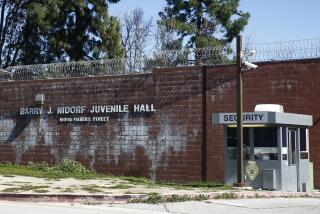Fixing the Process Is an Unmet Need
- Share via
The Ventura County Transportation Commission (VCTC) staff told me recently that Ventura County spent only about 34% of its state allocation of Transportation Development Act (TDA) funds for public transit in 1999-2000. TDA funds, by statute, are to be spent primarily on improving public transportation but in certain circumstances can be used for road improvements.
Staff for the San Luis Obispo Council of Governments, also interviewed in the last two weeks, said their county spent 70.1% of its state TDA allocation for transit in 1999-2000. The council has the same duties regarding TDA funds as VCTC does here. San Luis Obispo County has a population of about 270,000 people; Ventura County has about 750,000. There should be a more successful market for transit in our more populous county, yet San Luis Obispo County is more transit-friendly. Can you see something wrong here?
VCTC staff said that $7.1 million of an available $20.9 million in TDA funds was actually spent on transit--the rest diverted to pave and improve roads because there were “no unmet transit needs that were reasonable to meet,” at least as defined by VCTC. VCTC staff said that not one city in the county spent all of its TDA allocation for public transportation.
The San Luis Obispo Council of Governments spent about $5 million out of an available $7 million in TDA funds for public transportation projects; three of its seven cities spent all of their allocation on public transit. Ventura County’s record, by comparison, is pitiful, especially given what probably could have been accomplished had we spent more.
VCTC staff might protest that they are not allowed to spend more on public transportation and that you can lose TDA money if you continue to spend it for things that do not meet VCTC definitions of unmet needs that are reasonable to meet. Yet the 1998-’99 Ventura County Grand Jury found that VCTC had set the standards for unmet needs so high that legitimate requests from the public and cities were ignored.
*
The one advisory panel required by state law to give recommendations to VCTC during the unmet needs process is the Citizens Transportation Advisory Committee / Social Services Transportation Advisory Council. The committee helps guide the process and serves as a public watchdog. I am an appointed member, in my second year.
Each year, committee members have protested that the system seems designed to ignore what most reasonable people would consider unmet transportation needs--by defining them as not reasonable to meet. If so defined, TDA money cannot be spent on those needs--and can be spent on roads.
On April 11, the advisory committee voted unanimously to recommend to VCTC at its May 5 meeting that the commission reexamine the definitions of “unmet needs” and “reasonable to meet,” with the goal of arriving at a broader interpretation. Our recommendation was not presented in the staff report or by VCTC staff at the meeting. I was present, and so I spoke out. My comments were not well-received. The implication was that if advisory committee members could only be adequately educated to understand VCTC definitions, there would be no problem.
When I shared the comparisons between San Luis Obispo and Ventura counties, I was reminded that VCTC spends additional federal transportation dollars separate from TDA money. True. Our larger population makes us eligible for more federal transportation money than our neighbor; we should spend more than they do. But success at getting federal grants is no excuse for not using state transit funds for public transit.
We need a shift in the process used to determine what is, and is not, an unmet transit need and what is reasonable to meet. The current philosophy relegates public transportation to second-rate status, virtually ensuring that it will never attract the riders to support a first-rate system.
VCTC, the county and its 10 cities should make it a priority to redefine unmet needs so that more TDA money is spent on public transportation and less is spent on roads. If state law does constrain VCTC, then the law should be changed.
We in Ventura County need a new vision for public transportation that makes it more accessible, convenient, pleasant and desirable for the daily needs of all residents, rich or poor. The system should be so good that people want to get out of their cars and use it. There will always be a place for cars and roads. But there also must be a more vibrant and useful public transportation system. Otherwise, the quality of life of all residents will be compromised.
More to Read
Sign up for Essential California
The most important California stories and recommendations in your inbox every morning.
You may occasionally receive promotional content from the Los Angeles Times.













